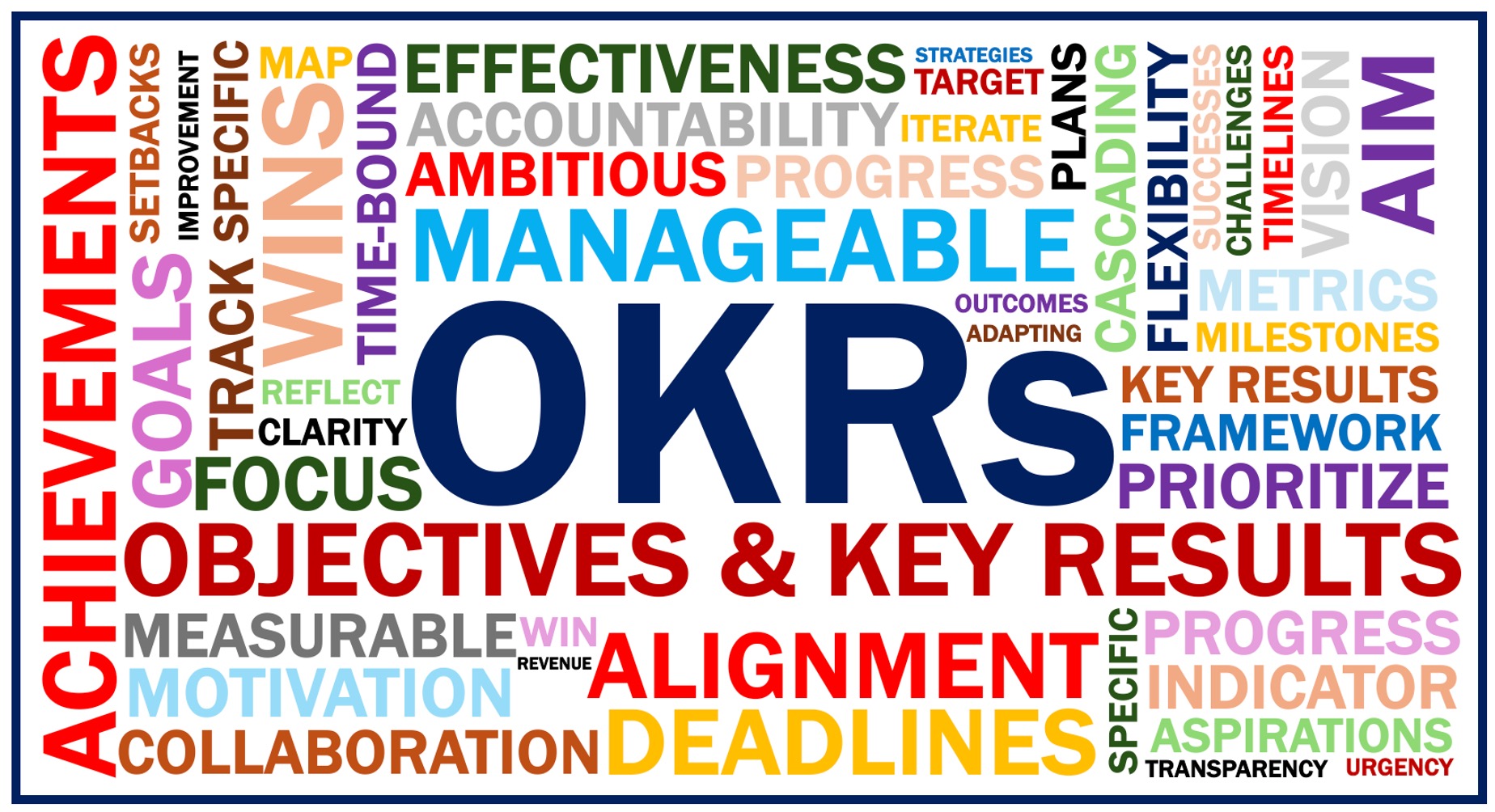OKRs or Objectives and Key Results are extremely helpful for setting goals and staying focused in today’s fast-paced environment. OKRs are a powerful goal-setting framework that will help any individual prioritize their efforts and track progress effectively.
The OKR framework is favored by business executives for its ability to facilitate the achievement of strategic objectives through clear and collaborative goal-setting.
In an article published by Forbes, Laura Hennigan wrote:
“Objectives and Key Results (OKRs) provide a framework for businesses to execute and achieve their desired strategies through simple, collaborative goal setting. OKRs have helped many organizations, including Google, successfully establish priorities, create internal alignment, increase accountability and reach their objectives.”
What do OKRs consist of?
OKRs are a powerful tool designed to align individual and team efforts with the achievement of specific objectives. They comprise two main components:
-
Objectives
Significant goals you aim to achieve within a defined timeframe, such as a month, quarter, or year.
-
Key Results
Metrics or milestones that track progress toward achieving your objectives.
Benefits
Setting OKRs offers numerous advantages, including:
-
Clarity and focus
OKRs help you clearly define your goals and prioritize your efforts. This can help you avoid being sidetracked or overwhelmed.
-
Measurable Progress
With quantifiable key results, you can objectively track your achievements and adjust your strategies as needed.
-
Alignment and Collaboration
OKRs facilitate the cascading of goals from the organizational level to individual objectives, enhancing team alignment and collaboration.
-
Motivation
Having clear objectives and being able to measure your progress can boost your motivation.
-
Accountability
Being able to measure your progress keeps you accountable.

How to set OKRs
Here are some tips on setting OKRs:
-
Determine Your Objectives
Determine the overall objectives of your organization for the upcoming period.
Perhaps you plan to develop new products, grow markets, increase revenue, or improve operational effectiveness.
A student may be aiming to achieve a specific GPA (grade point average), complete a research project, or improve time management.
-
Define Key Results
For each objective, outline 2–5 key results that will serve as measurable milestones. These should be specific, quantifiable, and time-bound.
For example, if your goal is to get better at time management, your key outcomes can be “Spend no more than two hours per day on social media” or “Complete all assignments at least 48 hours before the due date.”
-
Set deadlines
Set realistic timelines for completing your goals and important deliverables. This will support your sense of urgency and help you stay on course.
-
Track Your Progress
Regularly review your progress toward your key results and make adjustments as needed. Remember to celebrate small wins and learn from setbacks to continue improving.
Strategies
Here are some strategies you can employ to make the most out of OKRs:
-
Start Small
Begin with a few manageable objectives and key results to get comfortable with the OKR process before moving on to bigger and more ambitious goals.
-
Accountability
Share your OKRs with friends, mentors, or family so they can keep you accountable and help you gather feedback.
-
Be flexible
Acknowledge that things can change, and be prepared to modify your OKRs to reflect such changes while keeping your overall objectives in mind.
-
Reflect and Iterate
At the end of each cycle (e.g., month, quarter, or year), take some time to reflect on your successes, challenges, and lessons learned. Use these insights to refine and improve your OKR process for the next cycle.
Written by Nicolas Perez Diaz
